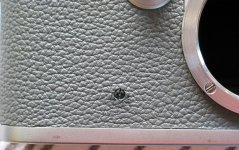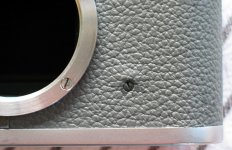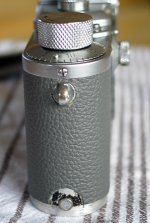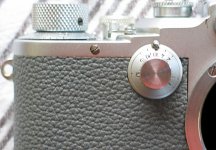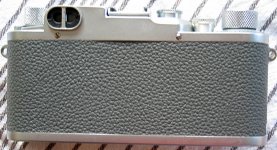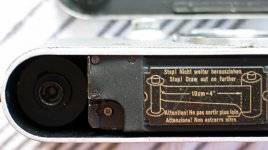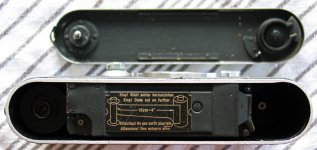Here`s an early Christmas present..........
A 1956 Leitz Summarit f1.5 50mm lens with a Bolex Cine adapter in excellent condition - I`ve decided to KEEP this lens, instead of selling it or trading it......(I predict an increase in value for the Summarit in the next couple of months, in the direction of
$500+)
I was also offered a bunch of vintage cine gear with this lens, in the closing of an estate, if anyone`s
INTERESTED please drop me a line and let me know if any of this stuff`s worth anything to someone, I`m sure the Bolex, Beaulieu cameras and the Fujinon lenses are`nt cheap
1. D. O. Industries Anamorphic 16F (used, good condition. Lens
has bottom cap)
2. Soligor Television Lens 75mm (small nicks on the outer
surface, no caps)
3. Singer Anamorphic 16D Nr. 48740 (mint condition, both caps
and case)
4. Eastman Kodak Cine Ektar Lens 50mm Nr. R01446 (some
discoloration on outer surface, small cap only)
5. Fujinon-TV Lens Nr. 635264 (mint condition, no covers)
6. Somtar 16mm, 2inch f/16 (good condition, no covers)
7. Wollensak Raptar Telephoto Lens, 1 1/2 inch f/3.2 (small
cover only in case)
8. Elgeet Adapter #805 (still in box )
9. Elgeet Cineflex Viewer #CFX-8 for 8mm camera (good condition,
in box)
10. Santar 3 inch Telephoto Cine for 16mm Movie (good condition,
both caps)
11. Lytar SOM Berthoit L77852 (mint conditon, one cover)
12. Wollensak size 4 filter hood (good conditon)
13. Wollensak 25mm Cine Raptar, Nr. C30508 (good condition, no
caps)
14. Soligor Wide Angle 10mm Lens (some surface nicks, used)
15. Saymon-Brown Hand Held Viewfinder ( in case, used)
16. Tiffen G-1 green filter in clear case
17. Hova VII B-85B color filter (chipped, no case)
18. Hova 49 85B Amber filter in case
19. Tiffen Photar 4xND series #5 fliter in case
20. Tiffen Hi-Trans 856 series 4 filter in case
21. Paillard Bolex 16mm wind camera, # 136662. 3 turret with
viewfinder #97322. In Working Condition, some outer surface
wear.
22. Soligor Wide Angle 10mm lens. Excellent condition.
23 Beaulieu R16 Camera, #666646, 3 turret, with 100 roll spool
film casing. Not sure if it works.
Thanks
Tom




